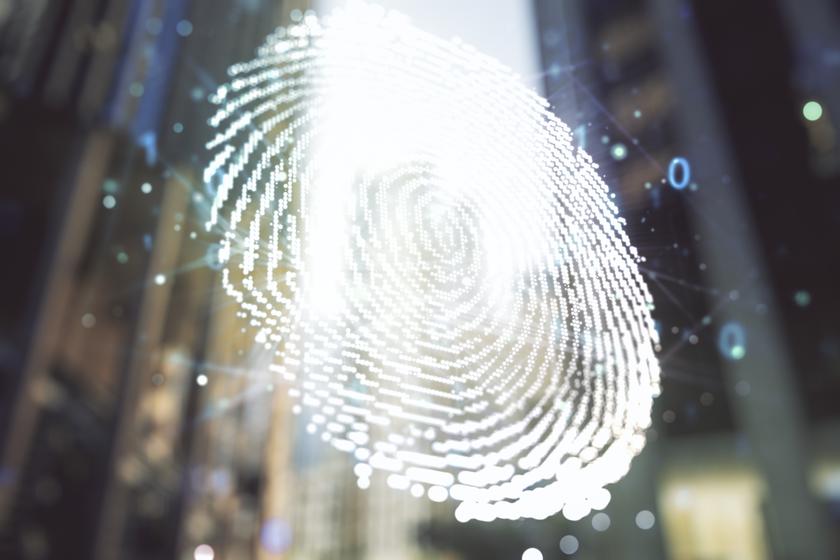- Categories :
- More
Understanding Biometric Access Control Systems: Types and Applications

In today's rapidly evolving security landscape, the significance of biometrics cannot be overstated. As traditional locks and keys give way to more advanced access solutions, the physical security industry is witnessing a paradigm shift towards biometric security. The essence of biometrics lies in its ability to harness unique human characteristics, such as iris recognition, fingerprint entry, and voice recognition, transforming them into digital data that plays a pivotal role in access control systems. These systems, designed for both management of large facilities and individual users, stand as a testament to the power of biometric access systems.
The benefits are multifold: from an individual user's ability to access doors with unprecedented ease, to a management team's capability to monitor visitor credentials and maintain the quality of security. The biometric access control system offers unparalleled quality, streamlining access control and ensuring only the right users, with the correct data, can gain entry. Additionally, with a rise in diverse biometric solutions, including iris and voice recognition, the versatility of these systems enhances the quality of controls in place. Systems designed for fingerprint entry, for example, provide an extra layer of assurance.
The door to the future of access control is unlocked not by traditional keys but by the intricate systems that understand and interpret our biometrics. Whether it's a visitor logging their data or a user seamlessly navigating controls, access control systems are revolutionizing the way we think about security. And as these solutions continue to evolve, one thing is certain: biometric access is setting new benchmarks for the entire industry.
What is Biometric Access Control?
The Basics of Biometric Access Control: Beyond Traditional Security
In a world where security dynamics are constantly shifting, the rise of biometric systems stands out as a pivotal transformation. Biometric access control is an access control method for identification and authentication that offers more than traditional security methods by using a human fingerprint, palm vein, retina or iris, face or voice recognition, to grant access through a security door. Biometric systems represent a significant leap forward, merging technology with the unique biological attributes of an individual to improve accuracy of identification.
The beauty of biometrics lies in its simplicity. While the technology behind it is advanced, the concept is straightforward: use an individual’s unique physiological or behavioral traits for recognition. This recognition process is integral to the efficacy of the system. Whether it’s the contours of a face, the pattern of an iris, or the rhythm of a voice, these traits are difficult to replicate, making biometric solutions far more secure than their conventional counterparts.
The heart of this revolution is the biometric access control system, designed to employ biometrics for the purpose of access management. Instead of relying on keys or cards that can be lost or stolen, these systems use the stored biometric data of authorized users. When a user attempts to gain access, the system scans the presented biometric data, compares it against the stored data, and either grants or denies access based on the match.
In the context of door security, imagine a door that no longer requires keys but simply scans a user's fingerprint or face for recognition. Such a system offers both enhanced security and convenience. But the applications of biometrics extend beyond mere door access. They play a crucial role in data management and user authentication across various platforms, ensuring only authorized individuals can access sensitive information. In businesses and organizations, management teams can leverage these systems to have better control over who enters specific areas, effectively keeping a tab on access points.
Moreover, as technology continues to evolve, the support for biometric solutions is growing. Advanced algorithms and expansive databases ensure recognition is both rapid and accurate. The systems in place today are the result of years of research and innovation, with a focus on optimizing user experience without compromising on security.
Incorporating biometric systems into an organization's overall security strategy ensures that controls are more stringent, and the management of access points becomes streamlined. As businesses continue to search for ways to bolster their security, it's clear that biometrics will remain at the forefront, offering reliable and efficient access solutions for diverse needs.
As we embrace the new era of security, it's evident biometric access control systems are not just an addition to our arsenal of security tools but are becoming the standard. As we continue to integrate technology into every facet of our lives, access solutions that combine convenience with credentials that cannot be duplicated, while maintaining top-tier security will always be in high demand.
The Power of Biometrics in Modern Security
The realm of modern security is no longer confined to traditional measures; it now prominently features biometrics as a central player, a testament to the profound impact of technology on safeguarding assets and identities. But what drives the ever-increasing reliance on biometrics? And how does it redefine access control in contemporary settings?
Biometrics, at its essence, revolves around recognition. Using distinct physiological or behavioral traits, biometric systems can quickly and accurately identify a user. This seamless recognition process ensures users no longer have to remember complicated passwords or carry easily misplaced access credentials or key cards. Instead, they simply rely on innate characteristics – a face, a fingerprint, an iris pattern – to affirm their identity.
While the use of biometrics itself is groundbreaking, its integration into access control systems magnifies its potential. These systems utilize biometric data to either grant or deny users access, ensuring a high level of security. Unlike traditional methods where a misplaced key could compromise an entire system, biometric systems only allow access when a user's presented data matches the stored data, making unauthorized access significantly challenging.
Furthermore, the power of biometrics doesn't rest solely in its recognition capabilities. The robust support infrastructure behind these systems ensures the stored data is secure and the system operates efficiently. Regular updates and enhancements further bolster system support, ensuring as security threats evolve, so too do our defensive measures.
Beyond the individual user, organizations are increasingly seeing the benefits of integrating biometric solutions into their security strategies. By incorporating biometric systems, businesses can exert more granular control over who accesses specific spaces and information. Such precision in access control not only enhances security but also facilitates smoother operations, as users can move without hindrance in areas they're authorized to be.
In the gambit of modern security solutions, biometrics stands out prominently. Its unique blend of convenience, efficiency, and top-tier security ensures that as challenges arise, our defense mechanisms are more than capable of meeting them. As we further traverse the digital age, biometrics will undoubtedly solidify its place as an indispensable tool in the realm of access control.
What Are The Types of Biometric Access Control Door Locks?
In the rapidly evolving landscape of biometric access security, technologies continue to change but the most common types of biometric access control door locks are fingerprint entry, retina scans and iris recognition, face and voice recognition, palm and finger vein patterns, which have considerably reshaped the contours of biometric entry, pushing the boundaries of what access control can achieve.
The technology behind fingerprint door locks has come a long way in the world of access control and are very common these days, but some of the other biometric access methods have yet to be incorporated into the door lock itself. A biometric scanner (similar to a card reader) is used to verify an individual and release an electric strike, maglock, electronic lever or whatever door hardware is being used to secure the opening.
Fingerprint Door Locks: A Pioneering Approach to Access Control
One of the earliest adopted and most trusted methods, fingerprint entry, capitalizes on the unique patterns found on an individual's fingertips. Every person's fingerprints are distinct, making them an ideal form of identification. This has led to a surge in systems that employ fingerprint door locks as their primary mode of authentication. While face recognition offers insights into identifying individuals from a distance, fingerprint entry provides a tactile, immediate method of verification. It's an embodiment of the perfect marriage between convenience and security: a user simply places their finger on a scanner, and access is granted based on the stored fingerprint data.
Retina & Iris Scan Door Locks: Delving Deeper into Biometric Insights
Where fingerprints harness the uniqueness of our touch, retina and iris recognition delves into the intricate patterns of the human eye. No two irises are the same, making iris recognition an incredibly accurate form of biometric entry. Advanced biometric systems use high-definition cameras to capture detailed images of the iris, comparing them against stored data to authenticate a user. Unlike other forms of biometric identification, the human eye remains relatively unchanged throughout an individual's life, providing consistent insights systems can rely upon.
Face Recognition: Fast and Touchless Access
Facial recognition is an access method that utilizes face recognition software to verify the identity of an individual. Granting access through a specific opening is similar to logging into your computer, a camera captures the contours and dynamic patterns of a persons face, then verifies the person to an existing database of stored images. Facial recognition is a fast, touchless and secure method of identification, that is, if you don't have identical twins working for your business.
Voice Recognition: More than Just Words
Voice recognition transcends the mere understanding of spoken words. Instead, it delves into the intricate patterns, pitches, and modulations unique to each individual. By capturing these distinct characteristics, a biometric system can authenticate a user solely based on their voice. In contexts where hands-free authentication is beneficial, voice recognition serves as a vital component of access control. Imagine a scenario where an individual can gain access to a facility simply by speaking a phrase – eliminating the need for physical contact or visual verification.
Voice Control: Commanding Systems with Speech
Beyond the realm of recognition, voice control introduces an interactive dimension to security systems. It’s not just about gaining access; it's also about controlling various facets of a system through voice commands. This interactive feature transforms traditional access control dynamics. With voice control, users can manage different aspects of biometric access control systems, from adjusting settings to querying logs, all through simple spoken directives. Such capabilities streamline operations and provide users with a sense of command over their security apparatus.
Palm & Finger Vein Patterns: There Can Only Be One
Similar to the technology behind fingerprint entry, a persons palm is one of a kind, making it an extremely secure way to grant access through an opening. It also serves as a touchless access method because it only requires a persons hand elevated over a scanner to authenticate a person and grant access. The downside is, with age or injury (such as a burn) an individuals vein pattern can change. So not only are these type of systems expensive, but could require reverification of individuals in the system as time goes on.
Overall, the continuous development in biometric solutions underscores the importance of adapting to emerging security challenges. With the benefits of accurate identification, an extra layer of security and touchless access methods, biometric access systems are here to stay. As we dive deeper into the digital era, the role of advanced control biometric techniques like fingerprint door locks, retina and iris recognition, face and voice recognition, will only become more central, ensuring our security apparatus is not just responsive but also ahead of the curve.
Biometric Security: A New Age of Access Control
In the intricate web of modern security challenges, there stands a beacon of hope and innovation: biometric security. Gone are the days when mere passwords or physical keys sufficed. Today, as cyber threats evolve and physical breaches become more ingenious, the need for a more robust, personalized, and virtually impenetrable security system is paramount. This is where biometric security shines, providing assurance in an age of uncertainty.
Biometric security isn't just about using biology for identification; it's about fundamentally redefining how access control operates. At the heart of this transformation lies the dynamic relationship between an individual's unique traits and the sophisticated algorithms of an access system. Whether it's facial patterns, voice modulations, or fingerprint ridges, every biometric marker serves as an unreplicable key, ensuring access is granted only to the genuine user.
This seamless integration of biology and technology has made the access control system more resilient. Traditional systems, with their reliance on replaceable and often duplicable keys or codes, harbored inherent vulnerabilities. Biometric security, on the other hand, ties access control to the irreplaceable uniqueness of human biology. This means even if data is compromised, without the actual biometric marker – be it a face, voice, or fingerprint – access remains restricted.
Furthermore, the adaptability of biometric security ensures that as the landscape of threats changes, the system evolves. Regular updates, continuous monitoring, and advanced algorithms ensure that the control mechanisms remain a step ahead of potential security breaches.
Biometric security stands as a testament to the capabilities of modern technology, offering a level of assurance that was previously unattainable. As the digital age continues to expand its horizons, biometric security will remain at the forefront, acting as a bulwark against threats and ensuring access control remains uncompromised. It's more than just a security measure; it's a promise of safety, integrity, and innovation in a world that demands nothing less.
Biometric Access Control System Installation
Management and Integration of Biometric Access Control Systems With The Flying Locksmiths
Navigating the intricacies of a biometric access control system requires expertise, especially as these systems delve deeper into unique markers like fingerprints for identification. Properly installing and managing such systems isn't merely about integration; it's about maximizing security efficiency and longevity.
The Flying Locksmiths, with a rich legacy in access control system installation and commercial locksmith services, are pioneers in this domain. Their unmatched expertise spans traditional locksmithing to the advanced realm of biometric solutions. Our team of security specialists ensure your biometric access control system is not only flawlessly integrated but also maintained for optimal performance.
Partnering with us means entrusting your security to a team that comprehends both traditional and modern security paradigms. Our unique blend of skills ensures your business gets a tailored, holistic security solution. In today's world, where security is paramount, your biometric access system's efficiency is non-negotiable. By partnering with The Flying Locksmiths, you ensure a blend of tradition, innovation, and expertise. Secure your business's future today; reach out to us for unparalleled biometric access control solutions.
BY: Jake Pflaumer














